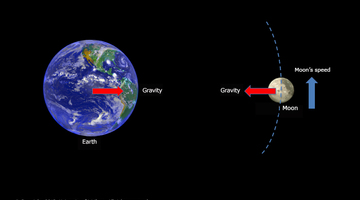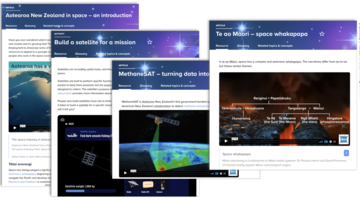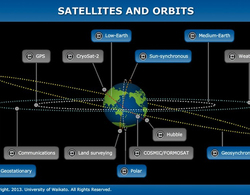

Dr Greg Bodeker was a research scientist for the National Institute of Water and Atmospheric Research (NIWA), based at Lauder in Central Otago. Lauder is the primary southern hemisphere ...
READ MORE

A satellite is anything that orbits around another object. Moons are natural satellites that orbit around planets, whereas artificial satellites are objects that people have made and launched ...
READ MORE

Satellites help scientists measure the thickness of land and sea ice in Antarctica. To validate these measurements, Dr Wolfgang Rack from Canterbury University travels to Antarctica each year to ...
READ MORE

In this activity, students use a simple true or false interactive tool to categorise facts. This activity could be used as a formative activity to gather students prior knowledge and ...
READ MORE

In this activity, students observe how the Moon appears to move across the sky each hour, as well as over several days. They discuss how both the rotation of the Earth as well as the satellite ...
READ MORE

Aotearoa New Zealand has a developing space industry that employs people from around the motu. Our space industry encompasses: people who model atmospheric greenhouse gases and agricultural ...
READ MORE

Are you looking for ways to teach forces? If you’re new to the Science Learning Hub, you may want to start with our introductory video on teaching physics. Help, I’m teaching physics Discover ...
READ MORE

Although Aotearoa New Zealand is a relative newcomer to the international space industry, a deep knowledge of space enabled early Polynesians to navigate to these islands and develop mātauranga ...
READ MORE

Bring some awe into your classroom. The Science Learning Hub has developed a suite of resources designed to grow Aotearoa New Zealand students' interest in space. Join us to discover ways to ...
READ MORE
The weekly launch of an ozonesonde at Lauder in Central Otago enables scientists to monitor the distribution of ozone up through the atmosphere.
READ MORE
The Dobson spectrophotometer at Lauder in Central Otago is a key ozone-measuring instrument used by NIWA and is part of a global network of similar instruments.
READ MORE
Dr Allan McInnes and Dr Adrian McDonald, from the University of Canterbury, explain how gravity and projectile motion keep natural and artificial satellites in an orbital path.
READ MORE

The size, orbit and design of a satellite depend on its purpose. In this interactive, scientists discuss the functions of various satellites and orbits. Accompanying fact files provide ...
READ MORE

Use this interactive graphic organiser to highlight common alternative conceptions about gravity and satellites. Students can place the labels where they think they belong. This activity can be ...
READ MORE

Choose a mission and then successfully build and launch a satellite that can help gather the data required. Select here for additional information on using this interactive simulation.
READ MORE